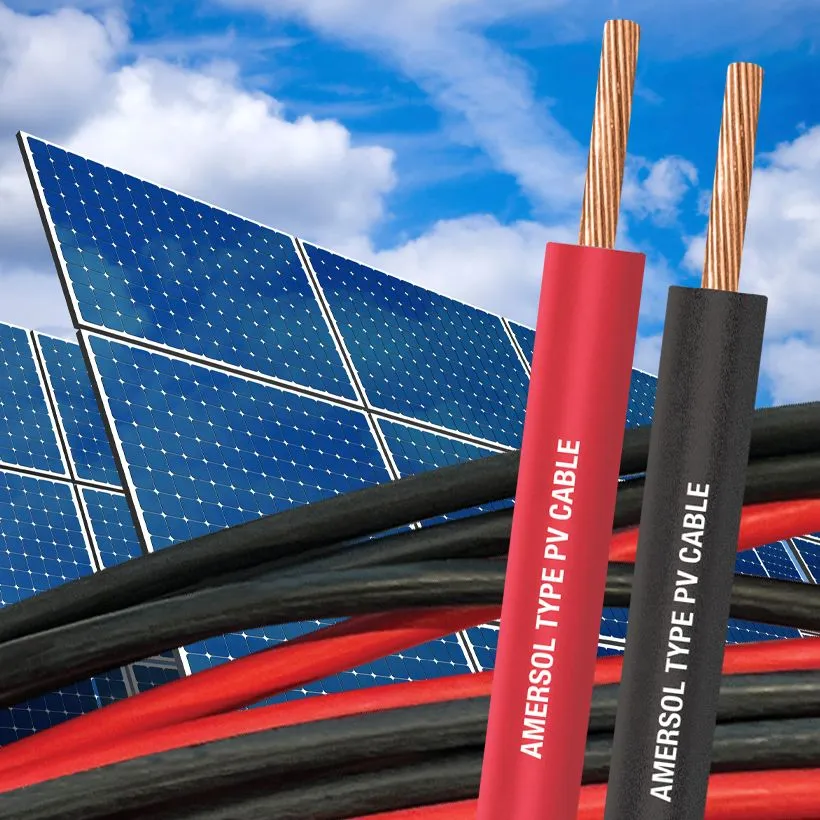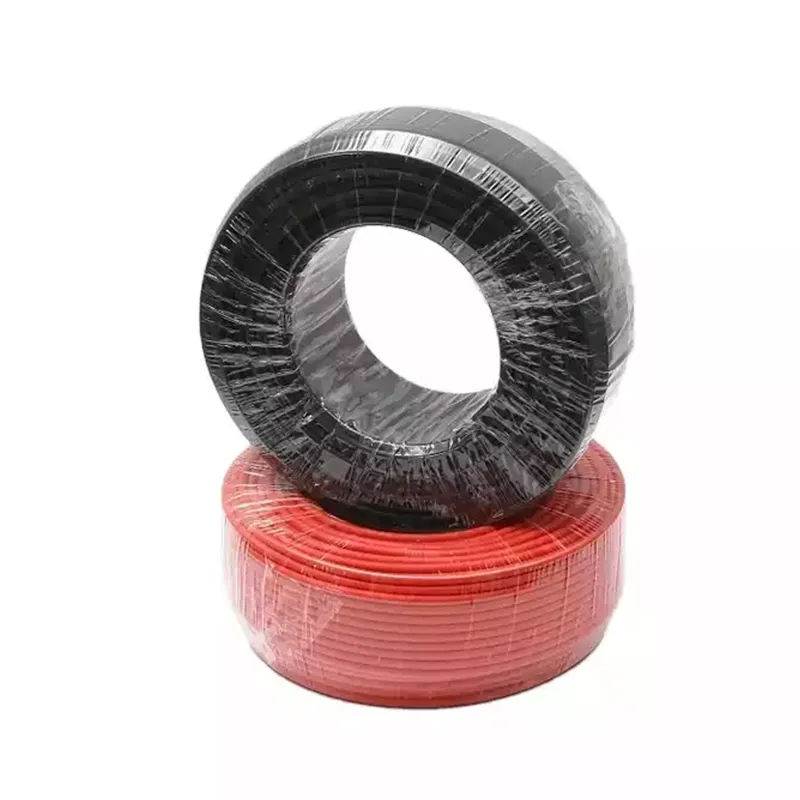Photovoltaic (PV) systems play a vital role in converting solar energy into electrical energy, and the cables that connect the various components are a key component of these systems.
This article will take a deep dive into the characteristics, benefits, and differences between PV cables and ordinary cables, while also discussing the factors that need to be considered when selecting cables for PV systems.
What are PV cables?
Photovoltaic cables are cables designed specifically for photovoltaic systems. They are used to connect solar panels, inverters, and other photovoltaic system components. Photovoltaic cables must be able to withstand harsh outdoor environmental conditions such as high temperatures, UV radiation, and moisture.
Photovoltaic cables are typically made of tinned copper conductors with cross-linked polyolefin insulation and sheathing. This special insulation and sheathing provides excellent mechanical strength, heat resistance, and UV resistance. Photovoltaic cables are typically rated for 1,000V or 1,500V DC.
What are the differences between PV cables and ordinary cables?
There are several key differences between PV cables and ordinary cables:
- Insulation and sheath materials: PV cables use cross-linked polyolefin as insulation and sheath materials, while ordinary cables usually use PVC. Cross-linked polyolefin provides better heat resistance, UV resistance, and mechanical strength.
- Voltage rating: PV cables are rated up to 1,500V DC, while ordinary cables are usually rated less than 1,000V AC.
- Environmental adaptability: PV cables are designed for harsh outdoor environments and can withstand high temperatures, UV rays, and moisture. Ordinary cables are generally not suitable for use in these conditions.
- Life expectancy: Due to its excellent material properties, the expected service life of PV cables can reach 25 years or more. The life of ordinary cables is usually much shorter.

Is PV cable directly buried?
Yes, some PV cables are rated for direct burial. However, it is important to check the specifications of a specific cable to make sure it is rated for direct burial.
Direct burial PV cables must be able to withstand the additional stresses of the burial environment, such as moisture and chemicals in the soil. They typically have thicker, more durable insulation and jacketing to protect the conductors from these conditions.
If a PV cable is not rated for direct burial, it should be installed in conduit or raceway for additional protection. Even if the cable is rated for direct burial, it is wise to use conduit or raceway in certain situations, such as in areas where vehicles or equipment may pass through.
Choosing the right PV cable for your needs
Selecting the right cable for your PV system is critical to ensuring the safety, reliability, and performance of your system. Here are some key factors to consider when selecting PV cables:
- Voltage and current ratings: Make sure the cable’s voltage and current ratings match the requirements of your system.
- Environmental conditions: Consider the temperature, UV, and humidity conditions the cable will be exposed to. Select a cable that is appropriate for your specific environmental conditions.
- Installation method: Will the cable be directly buried, installed in conduit, or exposed? Make sure you select a cable that is appropriate for your installation method.
- Cable length: Longer cable runs result in higher voltage drops. For long cable runs, a larger conductor size may be required.
- Compliance standards: Make sure the cable meets all relevant industry standards and local regulations, such as UL 4703 or EN 50618.
Can PV cables be used for AC power?
While PV cables are primarily designed for use in DC PV systems, they can also be used in AC applications in certain circumstances. However, it is important to understand the limitations and considerations of using PV cables for AC.
The insulation and jacket materials of PV cables are optimized for DC voltages. While they can handle AC voltages, they may not provide the same level of performance and protection as cables specifically designed for AC applications.
When using PV cables for AC, voltage and current ratings must be carefully considered. The AC voltage rating of PV cables is typically lower than their DC voltage rating. Make sure the AC voltage and current ratings of the cable are adequate for the application.
In addition, PV cables may not provide the same level of mechanical protection as dedicated AC cables. If the cable could be physically damaged, it may be wise to use a jacket or conduit for additional protection.
In some cases, it may be acceptable to use PV cables for short-distance AC interconnects, such as connections from an inverter to an AC circuit breaker. However, for long-distance AC transmission, it is better to use cables specifically designed for AC applications.
If you are considering using PV cables for AC applications, be sure to consult a qualified electrical engineer. They can help you evaluate whether the cable is suitable for your specific application and provide any additional protection or considerations required for safe use.
FAQs
Q1:How far can PV cables be run?
A1:While solar panels can technically be mounted up to 500 feet away, it is generally recommended to keep the distance to 50 feet or less. This ensures that the voltage drop remains within acceptable limits, typically around 2%. Beyond this range, the cost and potential energy loss of thicker wires may offset the benefits.
Q2:Do PV cables need to be the same length?
A2:No, the cables do not have to be the same length. The reason it is important for batteries is that the charge/discharge characteristics of each battery are the same. This way, each battery has the same cycle history and they age the same.
Q3:What is the voltage drop in PV cables?
A3:The current NEC (National Electrical Code) recommends that systems be designed for a voltage drop of less than 2%. In most cases, a properly designed solar system should be well below this standard.
Conclusion
PV cables play a key role in ensuring safe, reliable and efficient operation of PV systems.
By understanding the characteristics of PV cables and how they differ from ordinary cables, you can select the most appropriate cables for your PV system, optimize system performance and ensure its long-term reliability.
